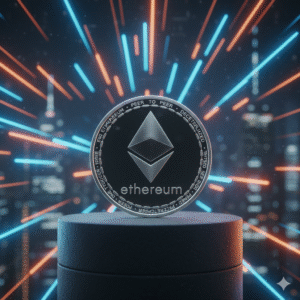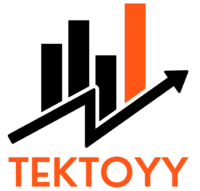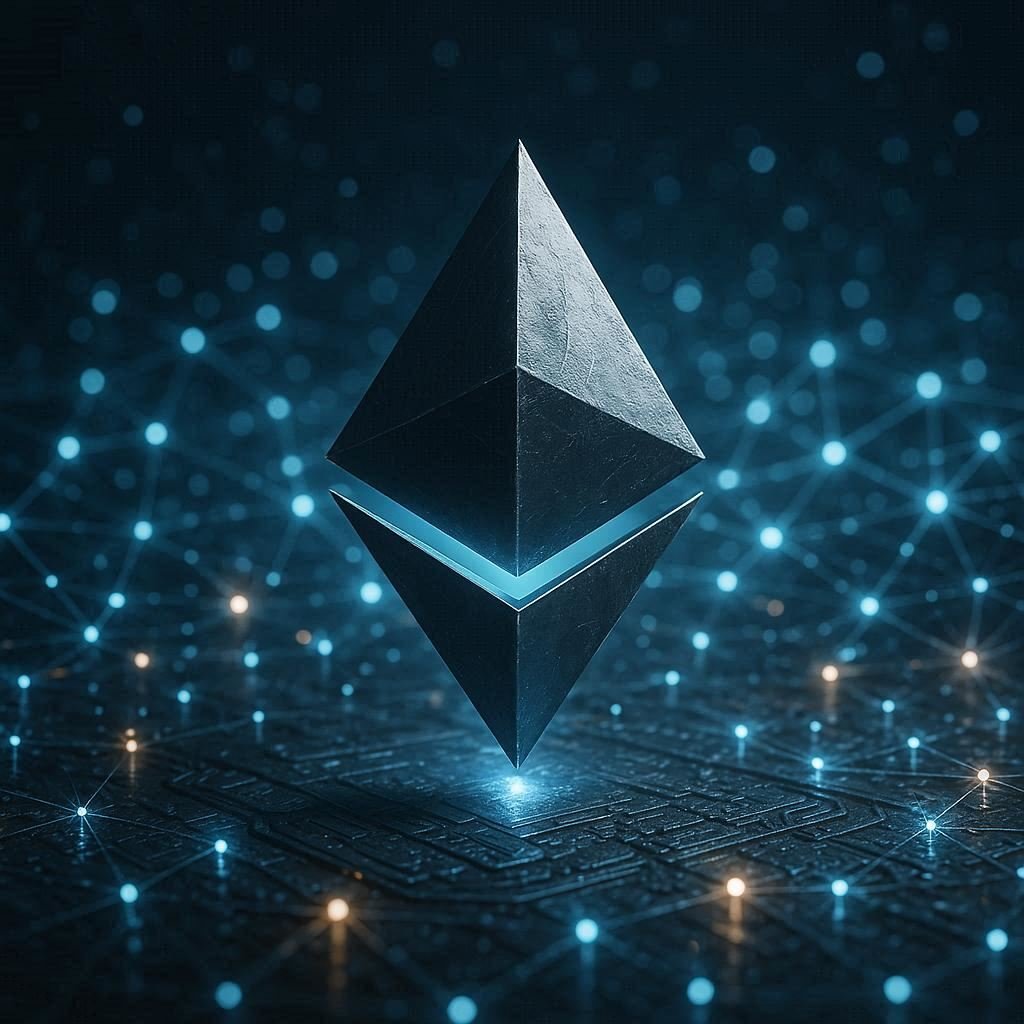In the vast universe of cryptocurrency, Bitcoin is the undisputed king, the original innovation that started it all. But right behind it, a second and profoundly different force has emerged, one that seeks to do for the internet what Bitcoin did for money. That force is Ethereum.
While many newcomers to the space see Ethereum simply as “the silver to Bitcoin’s gold,” this comparison only scratches the surface. To truly understand Ethereum is to look beyond digital currency and envision a global, decentralized computer that has the potential to fundamentally reshape finance, art, governance, and the very fabric of the internet itself.
This guide will provide a complete, easy-to-understand explanation of what Ethereum is, how it works, and why it has become the foundational settlement layer for a new digital economy.
Ethereum vs. Bitcoin: More Than Just Digital Money

The best way to grasp Ethereum’s purpose is to first understand how it differs from Bitcoin. Bitcoin was created with a clear and revolutionary goal: to be a peer-to-peer electronic cash system. Its blockchain is a masterpiece of engineering, designed to do one thing exceptionally well—securely record and verify transactions of its native currency, Bitcoin (BTC). Think of its blockchain as an immutable, public ledger book.
Ethereum’s creator, Vitalik Buterin, saw this and imagined something more. In 2013, he proposed a new blockchain that could do everything Bitcoin could do, but with a crucial addition: programmability.
Instead of a blockchain that could only track transactions, Ethereum was designed to be a blockchain that could run code. This single innovation transformed the technology from a simple ledger into a decentralized global computer. This allows developers from anywhere in the world to build and deploy unstoppable, censorship-resistant applications—known as “dApps”—on top of the Ethereum network.
- Bitcoin is like digital gold: A secure, decentralized store of value.
- Ethereum is like a global operating system: A decentralized foundation upon which countless applications can be built.
The Core Components of Ethereum: Ether, Smart Contracts, and the EVM
To understand the Ethereum network, you need to know its three essential building blocks: Ether (ETH), smart contracts, and the Ethereum Virtual Machine (EVM).
Ether (ETH): The Fuel of the Network
Ether, or ETH, is the native cryptocurrency of the Ethereum blockchain. Just as the U.S. has the dollar, the Ethereum ecosystem has ETH. Ether serves two primary functions:
- A Store of Value/Digital Asset: Like Bitcoin, ETH is a valuable digital asset that can be bought, sold, and held as an investment. Its price fluctuates based on market demand, technological developments, and overall network adoption.
- “Gas” for the Network: This is what truly makes ETH unique. Every single action performed on the Ethereum network—from sending a simple payment to executing a complex financial transaction or creating an NFT—requires a certain amount of computational power. This power is measured in “gas,” and users must pay for this gas using ETH. This fee serves two critical purposes: it compensates the network participants (validators) who secure the blockchain, and it prevents spam by making malicious or inefficient code expensive to run.
Smart Contracts: The Brains of the Operation
Smart contracts are the heart of Ethereum’s programmability. A smart contract is simply a program or a piece of code that runs on the Ethereum blockchain. It’s a self-executing contract where the terms of the agreement between a buyer and a seller are written directly into lines of code.
The most powerful feature of smart contracts is that they run exactly as programmed without any possibility of downtime, censorship, fraud, or third-party interference. Once a smart contract is deployed to the blockchain, it is immutable and unstoppable.
A simple analogy is a vending machine.
- The Agreement: If you insert $2.00 (the condition), the machine will dispense one soda (the outcome).
- The Execution: The machine handles everything automatically. It doesn’t need a human cashier to verify your payment or hand you the drink.
Smart contracts apply this same “if-this-then-that” logic to a limitless range of digital interactions, from financial agreements and insurance policies to voting systems and supply chain management.
The Ethereum Virtual Machine (EVM): The Global Computer
If smart contracts are the brains, the Ethereum Virtual Machine (EVM) is the global computer that runs them. The EVM is the runtime environment for every smart contract on Ethereum. It’s a powerful, sandboxed virtual machine embedded within each full Ethereum node. When a developer deploys a smart contract, it’s the EVM that executes the code and ensures that every node on the network comes to the same result, thus maintaining the blockchain’s consensus and integrity.
What Can You Build on Ethereum? Exploring the World of dApps

The combination of smart contracts and the EVM has unleashed a Cambrian explosion of innovation. Here are the most prominent categories of dApps built on Ethereum today.
Decentralized Finance (DeFi)
DeFi is arguably Ethereum’s most significant use case. It’s a movement dedicated to building an entirely new, open, and permissionless financial system using smart contracts. DeFi protocols aim to recreate—and improve upon—every service offered by traditional finance, but without central intermediaries like banks or brokerages.
- Decentralized Exchanges (DEXs): Platforms like Uniswap allow users to trade thousands of different digital assets directly from their personal wallets, without ever giving up custody of their funds.
- Lending and Borrowing: Protocols like Aave and Compound allow users to lend their crypto to earn interest or borrow assets by providing their existing crypto as collateral.
- Stablecoins: Cryptocurrencies like USDC and DAI are pegged to the value of the U.S. dollar, providing a stable medium of exchange within the volatile crypto markets.
Non-Fungible Tokens (NFTs): The Revolution in Digital Ownership
NFTs are unique cryptographic tokens that represent ownership of a specific asset. Unlike ETH, where one token is identical to any other (making it “fungible”), each NFT is one-of-a-kind (making it “non-fungible”). This technology has created a verifiable way to prove ownership of digital items. While the initial boom was in digital art and collectibles (like CryptoPunks and Bored Ape Yacht Club), the use cases are expanding to include:
- Music and media ownership
- Event ticketing and memberships
- In-game assets and virtual land
- Digital identity and certifications
Decentralized Autonomous Organizations (DAOs)
A DAO is a new kind of internet-native organization that is collectively owned and managed by its members. All rules and financial transactions are recorded on the blockchain, and decisions are made by members voting with governance tokens. DAOs are used to govern DeFi protocols, manage investment funds, and coordinate freelance work, all in a transparent and globally accessible manner.
How Ethereum Works: From Proof-of-Work to Proof-of-Stake

For a blockchain to be secure, it needs a way for all participants to agree on the state of the ledger. This is called a “consensus mechanism.”
Initially, Ethereum used the same Proof-of-Work (PoW) system as Bitcoin, where “miners” used powerful computers to solve complex puzzles to validate transactions and earn ETH. However, PoW is incredibly energy-intensive.
In September 2022, the Ethereum community executed one of the most ambitious technical upgrades in history: “The Merge.” This event seamlessly transitioned the entire Ethereum network from Proof-of-Work to a Proof-of-Stake (PoS) consensus mechanism.
Under Proof-of-Stake:
- Instead of miners, there are “validators.”
- To participate, validators must lock up, or “stake,” a significant amount of ETH (currently 32 ETH) as collateral.
- The network randomly selects validators to propose and confirm new blocks of transactions.
- Validators are rewarded with new ETH for honest behavior but can have their staked ETH “slashed” (destroyed) if they act maliciously.
This transition reduced Ethereum’s energy consumption by an estimated 99.95%, making it an environmentally friendly “green” technology. It also allows any ETH holder to participate in securing the network and earn rewards through staking.
The Challenges and Criticisms Facing Ethereum
Despite its success, Ethereum is not without its challenges.
- High Gas Fees: The network’s popularity is a double-edged sword. During periods of high demand, the competition for block space can drive gas fees to very high levels, making small transactions uneconomical.
- The Scalability Trilemma: This is a well-known concept in blockchain design which posits that it is extremely difficult to build a network that is simultaneously decentralized, secure, and highly scalable. Historically, Ethereum has prioritized decentralization and security over raw transaction speed.
- Competition: These challenges have given rise to a host of competing “Layer 1” blockchains, often called “ETH Killers” (like Solana, Avalanche, and Cardano), that aim to offer faster and cheaper transactions.
Ethereum’s response to this is a technology called Layer 2 scaling solutions. These are separate blockchains (like Arbitrum and Optimism) that are built on top of Ethereum. They process transactions quickly and cheaply on their own chain and then bundle them up and post a summary back to the ultra-secure Ethereum mainnet.
The Future of Ethereum: What’s Next on the Roadmap?

Ethereum is not a finished product. It has a long and ambitious roadmap of future upgrades designed to make it more scalable, secure, and decentralized. The next major phase, known as “The Surge,” is focused on massively increasing the network’s transaction capacity through a technology called “danksharding.” This upgrade is specifically designed to make Layer 2 solutions even cheaper, with the goal of enabling thousands of transactions per second for a fraction of a penny.
The Foundation for Web3
Ethereum started as an idea to make blockchains programmable. Today, it has evolved into a global, decentralized platform that secures hundreds of billions of dollars in value and supports a thriving ecosystem of applications. It is the undisputed leader and foundational settlement layer for DeFi, NFTs, and the broader vision of a new, user-owned internet known as Web3. While challenges remain, its constant evolution and the unwavering dedication of its global community suggest that Ethereum is poised to be a dominant force in the digital world for decades to come.







